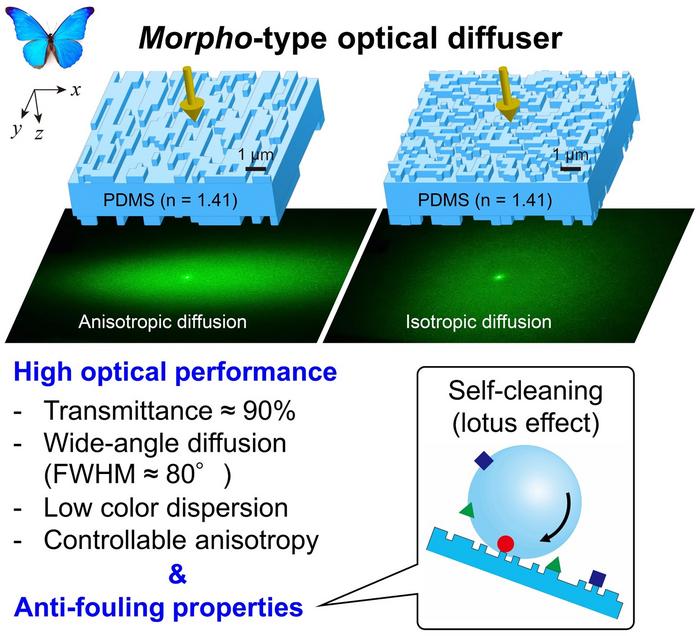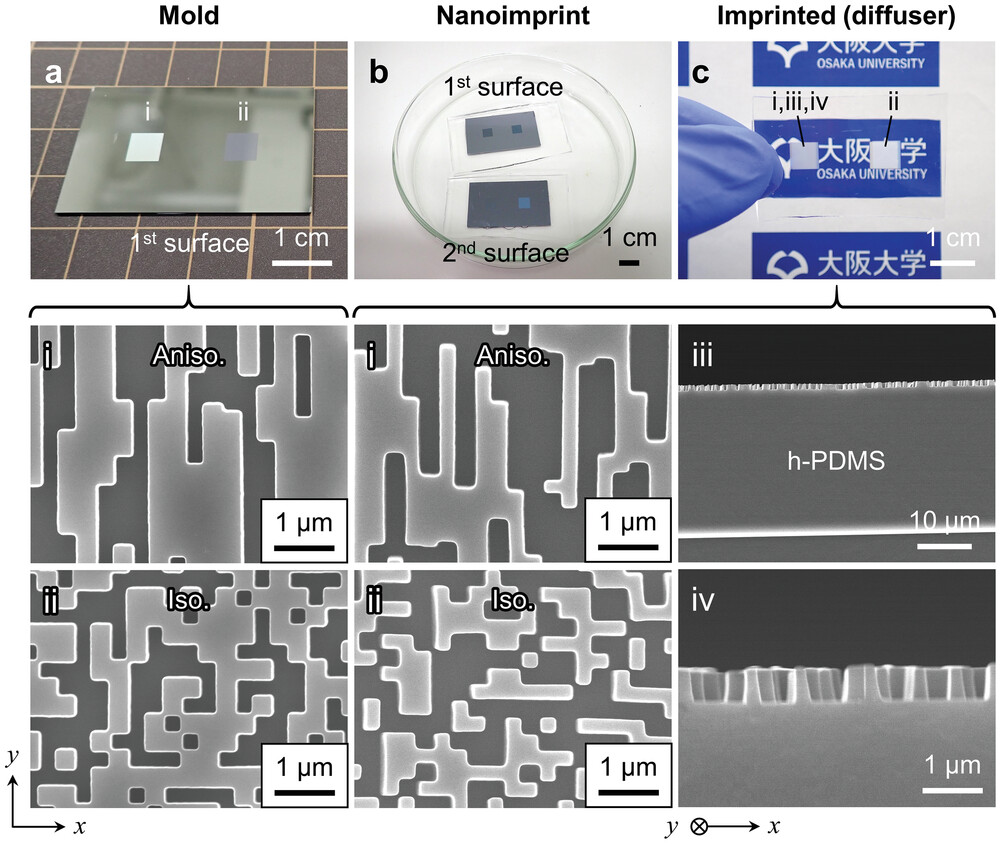From Osaka University 01/11/23

As you watch Morpho butterflies wobble in flight, shimmering in vivid blue color, you’re witnessing an uncommon form of structural color that researchers are only beginning to use in lighting technologies such as optical diffusers.
Furthermore, imparting a self-cleaning capability to such diffusers would minimize soiling and staining and maximize practical utility.
Now, in a study recently published in Advanced Optical Materials, researchers at Osaka University have developed a water-repelling nanostructured light diffuser that surpasses the functionality of other common diffusers.
This work might help solve common lighting dilemmas in modern technologies.
Standard lighting can eventually become tiring because it’s unevenly illuminating.
Thus, many display technologies use optical diffusers to make the light output more uniform.
However, conventional optical diffusers reduce the light output, don’t work well for all emitted colors, or require special effort to clean.
Morpho butterflies are an inspiration for improved optical diffusers.

Their randomly arranged multilayer architecture enables structural color: in this case, selective reflection of blue light over a ≥±40° angle from the direction of illumination.
The goal of the present work is to use this inspiration from nature to design a simplified optical diffuser that has both high transmittance and wide angular spread, works for a range of colors without dispersion, cleans by a simple water rinse, and can be shaped with standard nanofabrication tools.
“We create two-dimensional nanopatterns—in common transparent polydimethylsiloxane elastomer—of binary height yet random width, and the two surfaces have different structural scales,” explains Kazuma Yamashita, lead author of the study.
“Thus, we report an effective optical diffuser for short- and long-wavelength light.”
The researchers tailored the patterns of the diffuser surfaces to optimize the performance for blue and red light, and their self-cleaning properties.

The experimentally measured light transmittance was >93% over the entire visible light spectrum, and the light diffusion was substantial and could be controlled into anisotropic shape: 78° in the x-direction and 16° in the y-direction (similar to values calculated by simulations).
Furthermore, the surfaces both strongly repelled water in contact angle and self-cleaning experiments.
“Applying protective cover glass layers on either side of the optical diffuser largely maintains the optical properties, yet protects against scratching,” says Akira Saito, senior author.
“The glass minimizes the need for careful handling, and indicates our technology’s utility to daylight-harvesting windows.”
This work emphasizes that studying the natural world can provide insights for improved everyday devices; in this case, lighting technologies for visual displays.
The fact that the diffuser consists of a cheap material that essentially cleans itself and can be easily shaped with common tools might inspire other researchers to apply the results of this work to electronics and many other fields.



